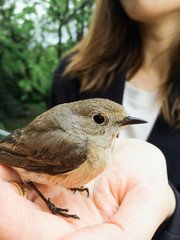Birds play a vital role in maintaining ecological balance, from pollination to pest control. However, they often face dangers such as injuries, habitat loss, and accidents caused by human activities. This is where bird rescue services step in, offering care, rehabilitation, and safe release back into the wild. Understanding how these services operate and why they matter can inspire more people to support these critical efforts.
The Importance of Bird Rescue Services
Birds encounter numerous threats daily—collisions with buildings, entanglement in wires, ingestion of plastics, or exposure to harsh weather conditions. Without intervention, many of these incidents result in permanent harm or death. Bird rescue organizations ensure:
- Emergency Care for Injured Birds – Treating wounds, fractures, or illnesses to help them recover.
- Rehabilitation and Recovery – Providing safe environments where birds regain strength before release.
- Education and Awareness – Teaching communities about bird safety and conservation.
Rescuing a bird is not just about saving one life—it contributes to the health of entire ecosystems.
Common Reasons Birds Need Rescue
Several situations can put birds in harm’s way, requiring immediate attention:
- Window Collisions – Birds often mistake glass for open space, leading to head injuries.
- Entanglement in Wires or Nets – Loose strings, fishing lines, and nets can trap wings and legs.
- Nest Displacement – Construction and deforestation can destroy nesting sites, leaving chicks vulnerable.
- Severe Weather Conditions – Storms, heatwaves, and cold snaps can disorient or weaken birds.
- Predator Attacks – Cats and other predators can seriously injure birds, requiring urgent care.
Quick intervention in these scenarios can mean the difference between life and death for the bird.

How Bird Rescue Services Operate
Professional bird rescue teams follow structured procedures to ensure the best outcomes:
- Assessment – Checking the bird’s condition to determine if it needs immediate medical attention.
- Safe Handling – Using proper techniques and equipment to prevent further injury during capture.
- Medical Treatment – Administering care for fractures, dehydration, infections, or poisoning.
- Rehabilitation – Providing a stress-free environment with proper nutrition and exercise.
- Release – Returning healthy birds to their natural habitats once they are fit to survive on their own.
These steps require expertise, compassion, and strict adherence to wildlife care regulations.
What to Do If You Find an Injured Bird
If you come across a bird in distress, here’s what you should do:
- Observe First – Ensure the bird truly needs help. Sometimes, fledglings are learning to fly and may not require intervention.
- Handle with Care – If necessary, gently place the bird in a ventilated box with soft padding. Avoid unnecessary contact.
- Keep It Quiet and Safe – Minimize stress by placing the box in a dark, quiet place away from pets and children.
- Contact a Rescue Service Immediately – Time is critical, so call a local bird rescue or wildlife rehabilitation center for guidance.
Avoid feeding or giving water unless instructed by a professional, as improper care can worsen the bird’s condition.
The Role of Education in Bird Conservation
Rescue organizations do more than save individual birds—they educate communities about prevention. Some key messages include:
- Installing window decals to prevent collisions.
- Keeping cats indoors reduces bird injuries.
- Avoiding the use of harmful pesticides that poison birds.
- Properly disposing of trash and fishing lines to prevent entanglement.
Community awareness reduces the number of birds needing rescue in the first place, creating a safer environment for wildlife.
Why Supporting Bird Rescue Matters
Bird rescue operations often rely on volunteers and donations. Supporting these organizations ensures they have the resources to:
- Maintain rehabilitation facilities.
- Provide medical care and food for injured birds.
- Conduct outreach and education programs.
Every contribution, whether time, money, or spreading awareness, helps protect bird populations and preserve biodiversity.
Final Thoughts
Bird rescue services are lifelines for countless feathered creatures struggling to survive in a rapidly changing world. By understanding their role and learning how to respond when we encounter a bird in need, we can all contribute to protecting wildlife. Small actions—such as securing our windows, keeping the environment clean, and supporting rescue efforts—make a big difference.
Every bird saved is a step toward a healthier, more balanced ecosystem. Together, we can ensure that these beautiful creatures continue to soar across our skies for generations to come.

